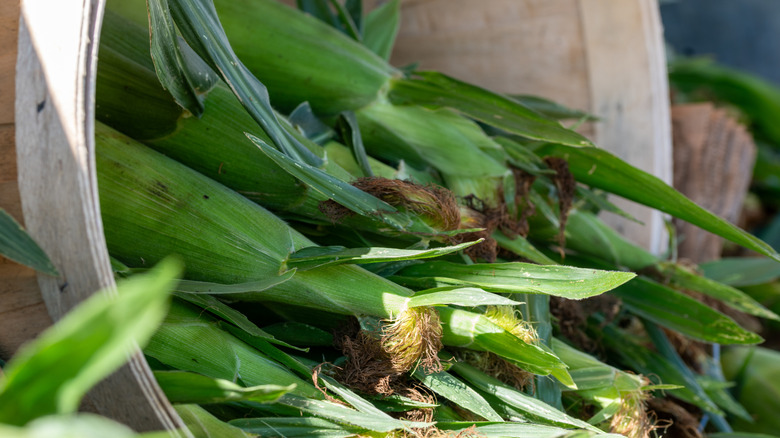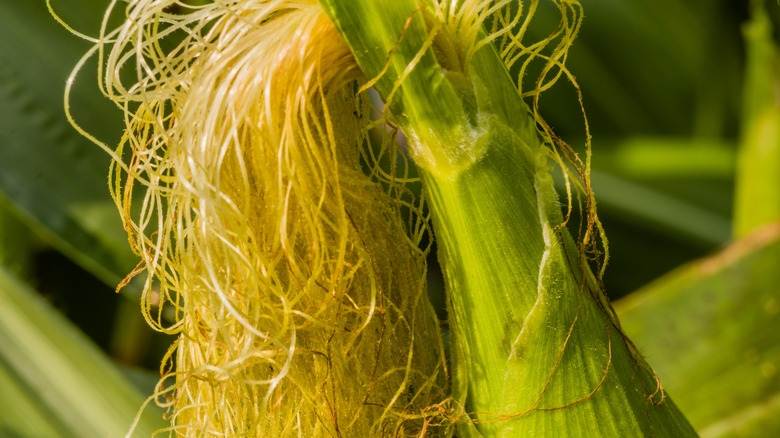Pick Out The Best Sweet Corn This Summer By Using A Hands-On Approach
Corn has a unique sweetness that few other foods can mimic, and even though you need to floss right after eating, that summery taste makes it all worthwhile. But take a visit to your local grocery store or farmer's market, and there are so many ears of corn on display; how do you know which ones to put in your basket? The silky end is the secret to picking out the best corn possible.
Corn silk is basically the plant's ponytail — those long, fine strands that grow beneath the husk and dangle off the end of the ear. These are also a dependable indicator of the corn's freshness: They shouldn't be darker than light brown, nor should they be sticky. Once you check their coloring, feel the ear of corn itself. Is it firm and rounded? Or does it feel pointy and skinny? You want something round you can hold on to.
Unlike peeling back the husk and piercing a kernel with your fingernail, the corn silk and heft are non-invasive ways to determine whether you should buy an ear or not. Husks keep corn moist and sweet, and peeking behind them breaks that seal. Also, sticking your nail inside food? Gross. No one, including you, wants to see that or eat punctured-by-someone-else corn. Just stick with touching the corn's exterior.
What is a corn silk, anyway?
Since there are many ways to cook corn on the cob to make it even more delicious, it's important to make sure you pick the right ear. As it turns out, the key is in understanding the parts of the plant that made the corn in the first place. As corn grows, each strand of silk connects to a potential kernel and acts as a pathway for pollen. When a grain of pollen from the corn tassel — that big, flower-like pouf at the top of the plant — lands on a strand of silk, it travels down to fertilize the ovule, creating one kernel of corn.
When you're finished eating an ear of corn, you're typically left with a few silky strands and an empty cob. So what do you do with those? First, marvel in the fact that the string you pulled from your teeth is responsible for one of the kernels you just popped in your mouth. Second, don't throw out your leftover cobs. One of my favorite tricks I learned in culinary class is to use them to make a flavorful and subtly sweet stock. You can use it to make, among other things, Ina Garten's tangy corn chowder with cheddar, or freeze it to enjoy the taste of fresh corn year round.

